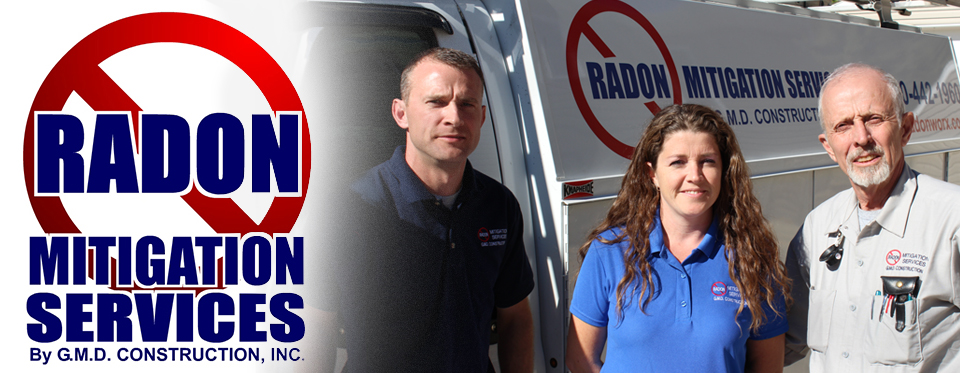|
|
What Radon Is
Radon is a naturally occurring, colorless,
odorless, highly radioactive gas produced by the decay of uranium 238,
found in earth. Radon and its associated by-products emit alpha and beta
particles and gamma rays. These particles attach themselves to other
airborne particles such as dust, and are inhaled into your lungs.
Once inside your lungs, they lodge in the mucus membranes. The damage from
these particles can cause cancer. Your lung cancer risk from radon is
determined by the amount you are exposed to, and the length of time you
have been exposed to it. The higher the level, the higher the risk.
The only way to know if you are living with Radon in your home is to test
for it. You can find test kits at most any hardware store. Another option
is to hire a certified professional to come to your home, thus assuring
the test is accurate.
How Radon Gets into Your Home
In most cases, radon is drawn into your home
by what is called the stack effect. Due to raised indoor air temperatures,
a natural vacuum pulls the radon up through your foundation. Furthermore,
radon can easily enter your home through open sump pits, cracks and holes
in the foundation around the perimeter of the basement, or around sewer
pipes, etc.
No level of radon is considered safe. Therefore, you should try to reduce
the gas' levels in your home as much as possible. The average radon level
in homes is 1.3 pCi/L. You should take action to reduce radon in your home
if your indoor level is higher than 4 pCi/L (4 picoCuries per liter).
Take Action Now
Both the Environmental Protection Agency (E.P.A.)
and the Surgeon General's office agree that radon is the second leading
cause of lung cancer. It results in as many as 36,000 deaths per year.
E.P.A. officials have urged nationwide testing for radon. They have also
set an action level of 4 pCi/l for indoor airborne radon levels.
|
|
![RadonIsReal.org [Infographic]](https://www.radonisreal.org/wp-content/uploads/2015/01/RadonInfographic-1000.png)

